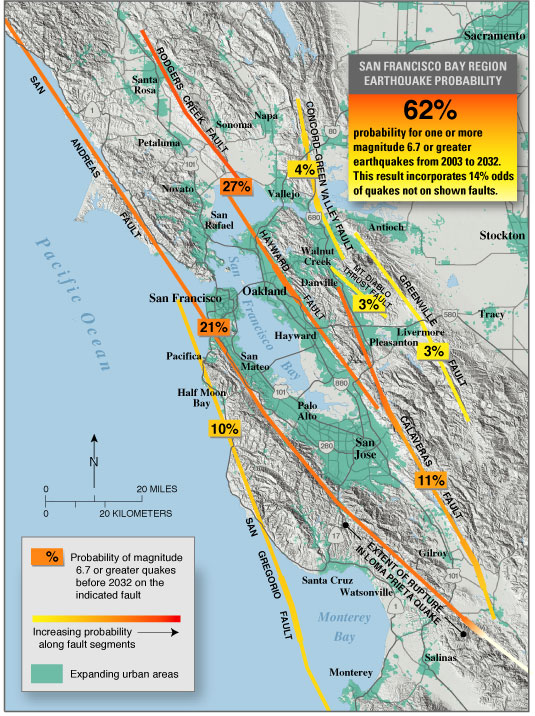One of the most obvious natural hazards that the people in the Bay Area face are earthquakes. Some of the issues to consider for having an earthquake in that region are:
- The handful of faults that go through the region.
- A very high likelihood of a major earthquake hitting the region within the next 30 years.
- Some areas include very bad soil conditions which can result in more damage.
- Many buildings do not meet the required earthquake code to withstand such a large earthquake.
- Tsunami, a less likely factor but still should be considered because the city is along the coast of the Pacific Ocean.
Flooding/Mudslides/Landslides
These factor on the other hand are commonly considered throughout many areas of the United States. The San Francisco Bay Area has experienced some flooding due to improper drainage. However, flooding is more frequent in the North Bay Area because its average rainfall is noticeably higher.
Some areas in the Bay Area that are considered to unstable have become urbanized so people living there have to be very precautious to the likelihood of mudslides and landslides. These problems are very common in the Santa Cruz Mountains.
Windstorms/Wildfires
In both late fall and early spring, the San Francisco Bay Area can experience very strong pacific storms. These storms can be hazardous because it can blow down trees and power lines which can cut off necessary power to people. Also strong winds can spread wildfires uncontrollable, especially in the fall when vegetation is the driest.
Source:
http://quake.abag.ca.gov/
http://earthquake.usgs.gov/regional/nca/1868virtualtour/bayarea.php/
http://www.sfmuseum.org/oakfire/berkeley.html
-----------------------------------------------------------------------------------------------------------------

No comments:
Post a Comment